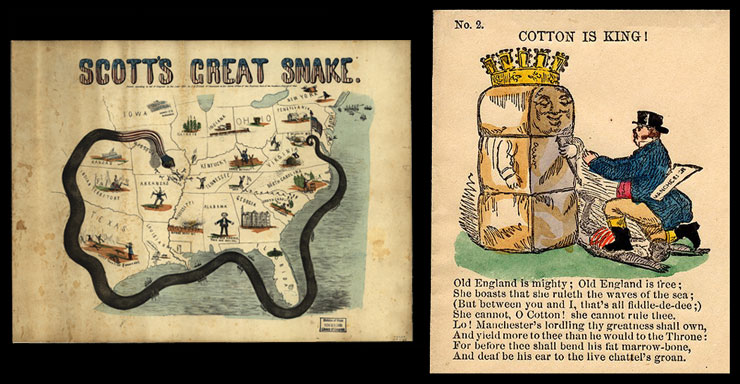


The Union plan for victory was devised by General Winfield Scott. It contained the following three major objectives to "squeeze" the South to surrender, much like an anaconda or boa constrictor would squeeze its prey.
The plan was criticized for being too passive. However, by 1864 Union generals Ulysses S. Grant and William T. Sherman had basically accomplished it.

Given the North's superior manpower and resources, the South needed to find a way to make the North tire of fighting and concede independence. It had the following two paths to this objective.
Both paths required a major south victory to win the war, but it never came. England was close to supporting the South in 1862 until its momentum was halted at Antietam and Lincoln issued the Emancipation Proclamation.
The Democrats almost came through for the South. General George McClellan, whom Lincoln fired, nearly won the Presidency in 1864. As late as August, Lincoln expected to lose. Some timely victories for Grant plus shrewd maneuvers by Lincoln saved the day.